
Meet Zoom AI Companion, your new AI assistant!
Boost productivity and team collaboration with Zoom AI Companion, available at no additional cost with eligible paid Zoom plans.
We all know that hybrid and remote work models are here to stay. If anything, everyone's constantly trying to refine their work model, providing enough flexibility to achieve business goals in any setting.
Updated on September 02, 2025
Published on September 02, 2025


These models aim to recreate the inner dynamics of the office, providing as much room as possible for communication, collaboration, and efficiency. The goal is to maintain productivity across any type of working model.
To help you make the best decision for your company with the latest data, we’ve pulled together key remote work trends, work-from-home statistics, and return-to-work statistics that reflect how teams are navigating this new era of work.
Whether you’re tracking remote work news or shaping your own strategy, these insights offer a clear look at where the workforce is and where it’s headed.
The work-from-home model, whether fully remote or hybrid, has dramatically reshaped the workplace. From shifting employee expectations to influencing company policies, remote work continues to be a defining trend across industries.
These key remote work statistics help illustrate how much remote work has had a massive impact on everyone involved. Understanding current trends is crucial for employers aiming to attract and retain top talent.
1. 36% of employees would prefer a fully remote work arrangement with their next employer. (Zoom)
2. 46% of workers who currently work from home at least sometimes said they’d consider leaving their job rather than return to full-time in-office work if their current employer were to get rid of flexible work-from-home options. (Pew Research Center)
3. 23% of Gen Z employees prefer to work fully remotely, the lowest of any generation. This compares to 35% of Millennials and 35% of Gen X who prefer fully remote work. (Gallup)
4. 55% of workers say they actively seek new job opportunities to improve work-life balance. (Owl Labs)
5. About 51% of U.S. workers are working a hybrid model, with 2% exclusively remote. (Gallup)
6. Smaller companies often offer more flexibility for employees to choose where they can work. Close to 75% of companies with fewer than 500 employees offer work flexibility. However, only 35% of companies with 500 to 5,000 employees offer it, and 17% of large enterprises offer flexible work. (Flex Index)
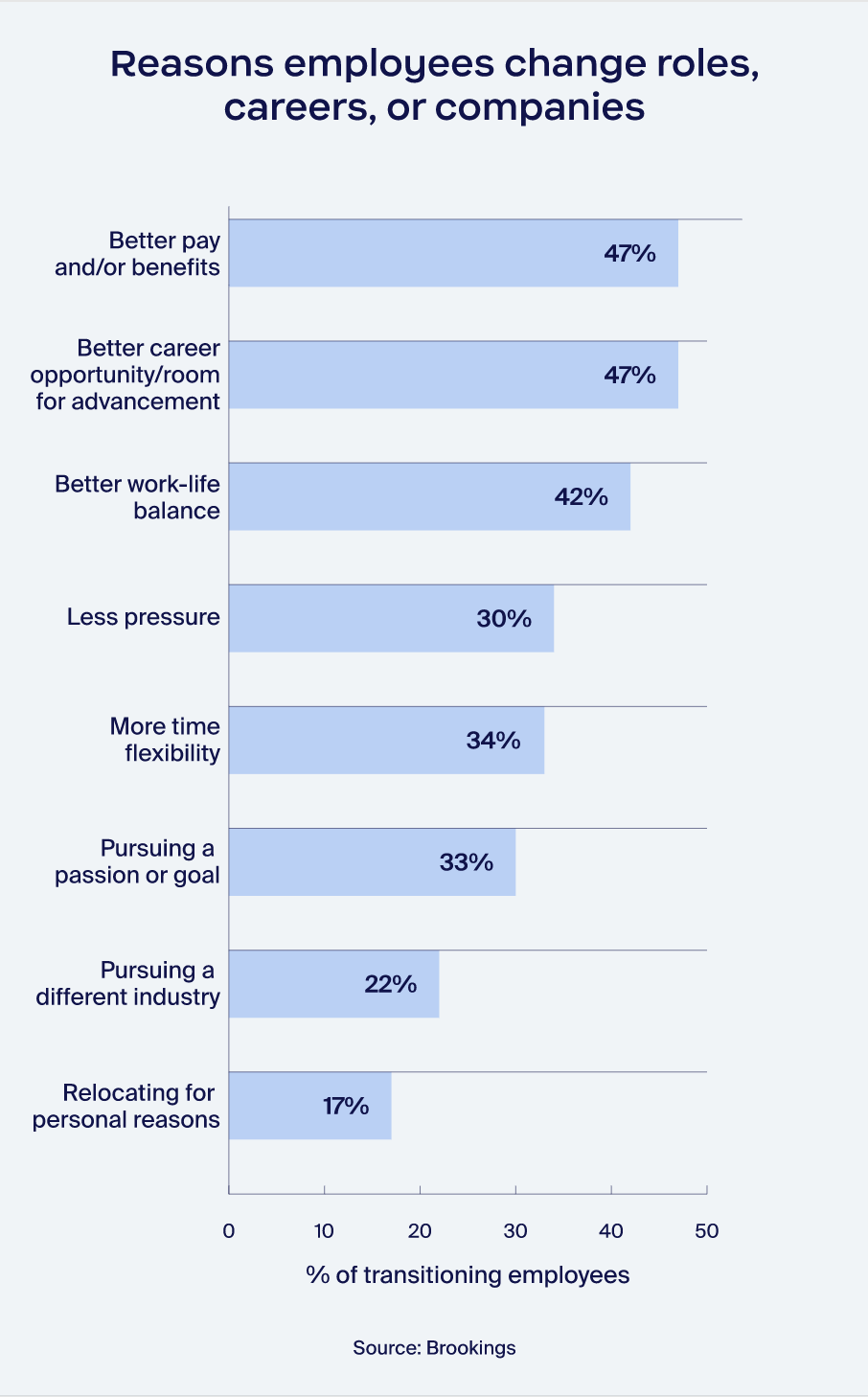
Not all industries can adapt to remote work in the same way. While sectors like tech, finance, and marketing have embraced flexible schedules, others like healthcare, manufacturing, and retail often require in-person interactions. Still, many roles in those in-office industries can successfully shift to remote or hybrid work models.
Recent remote work statistics by industry show that flexibility is not a one-size-fits-all solution but a customizable model that can apply across different functions. Staying informed on remote work news and industry-specific remote work trends helps companies determine whether remote or flexible setups are possible and beneficial.
7. 34% of professionals in the finance and accounting sectors are looking for a remote work opportunity. (Robert Half)
8. The information industry has the highest work-from-home rate, followed by the finance / insurance and professional / business services sectors. (WFH Research)
9. 11% of lawyers and legal professionals report working a fully remote schedule. (U.S Legal Support)
10. 67% of professionals in the HR industry would like some form of hybrid work. (Boundless HQ)
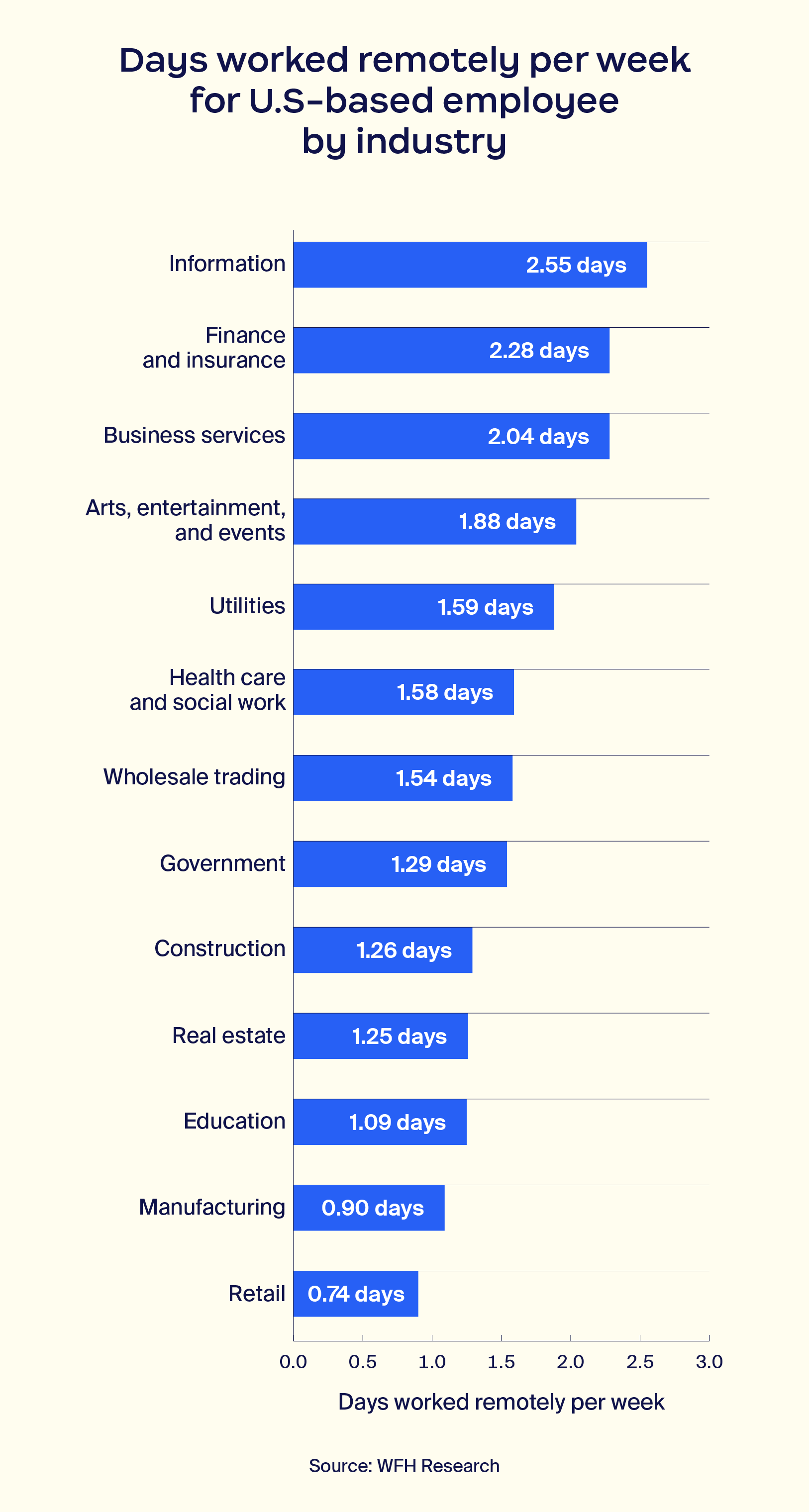
For a long time, every employer's concern was the impact a remote work schedule might have on productivity. And though it was a valid concern in 2019, the flexible work culture has come a long way since then. In fact, the global workforce continues to prove that remote work and productivity go hand in hand.
11. 74% of workers said not having a commute would make their day more productive. (Owl Labs)
12. 70% of professionals say focused work is easier when remote, with 65% saying managing their stress is easier. (Buffer)
13. 98% of remote workers would work remotely for the entirety of their careers and actively recommend remote working options to others. (Buffer)
14. 31% percent of employees reported that their company offers remote or hybrid working options in 2024, a -34% decrease from 2023. (McKinsey)
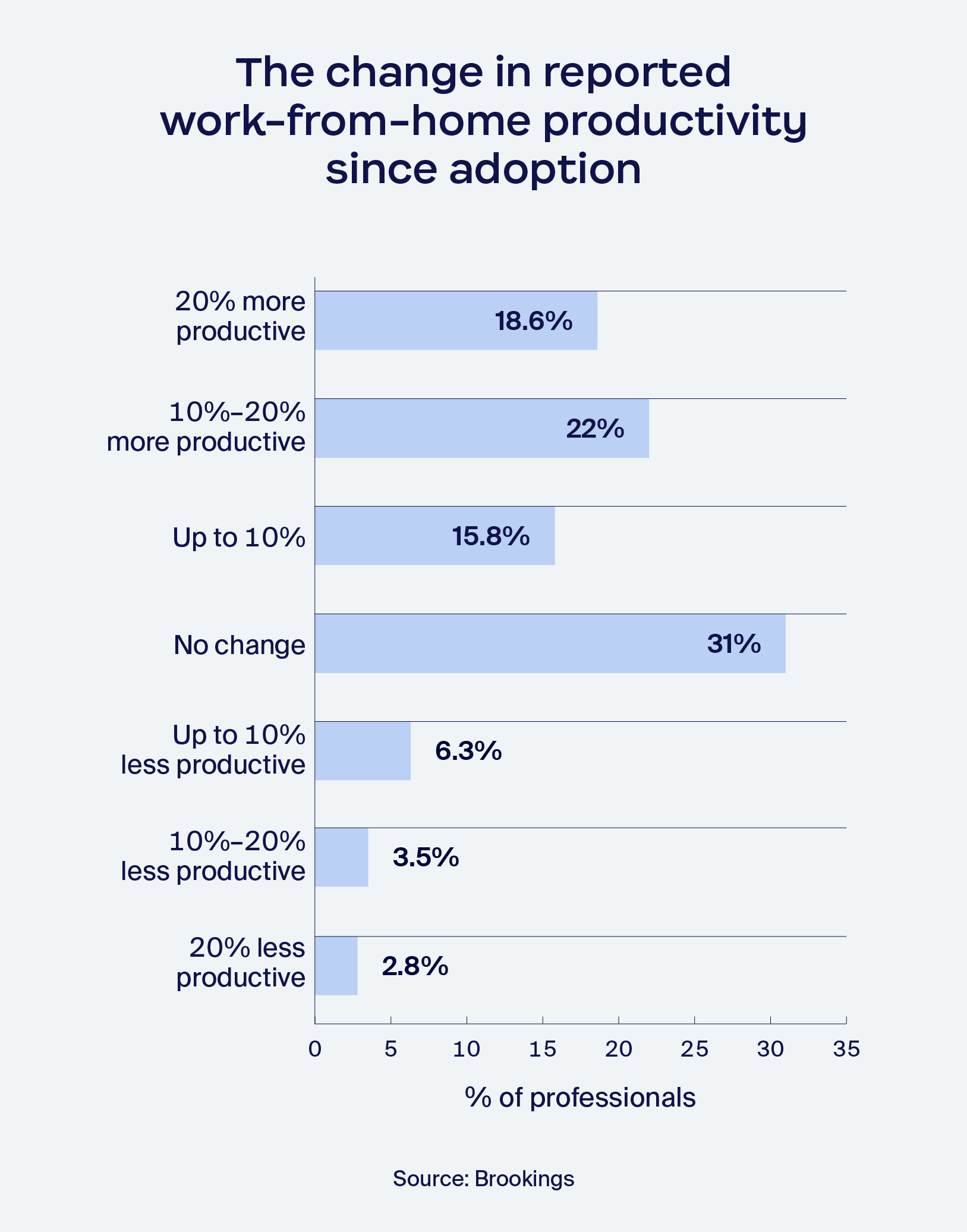
The need for software to enhance or even replace traditional means of communication has risen sharply since 2019. Since then, Zoom and other communication platforms enabling collaboration and teamwork have become the norm. And companies continue to invest in software solutions that provide the functionalities needed to succeed in a remote or hybrid work environment.
15. 75% of employees believe that their organization's current remote work tools and technology require upgrades. (Zoom)
16. 37% of companies upgraded their video meeting tech in 2023. (Owl Labs)
17. As of 2023, the U.S. market for technologies and products that enable remote work has grown four times since 2019. (WFH Research)
18. 83% of employees say good technology plays an important role in their work. (Owl Labs)
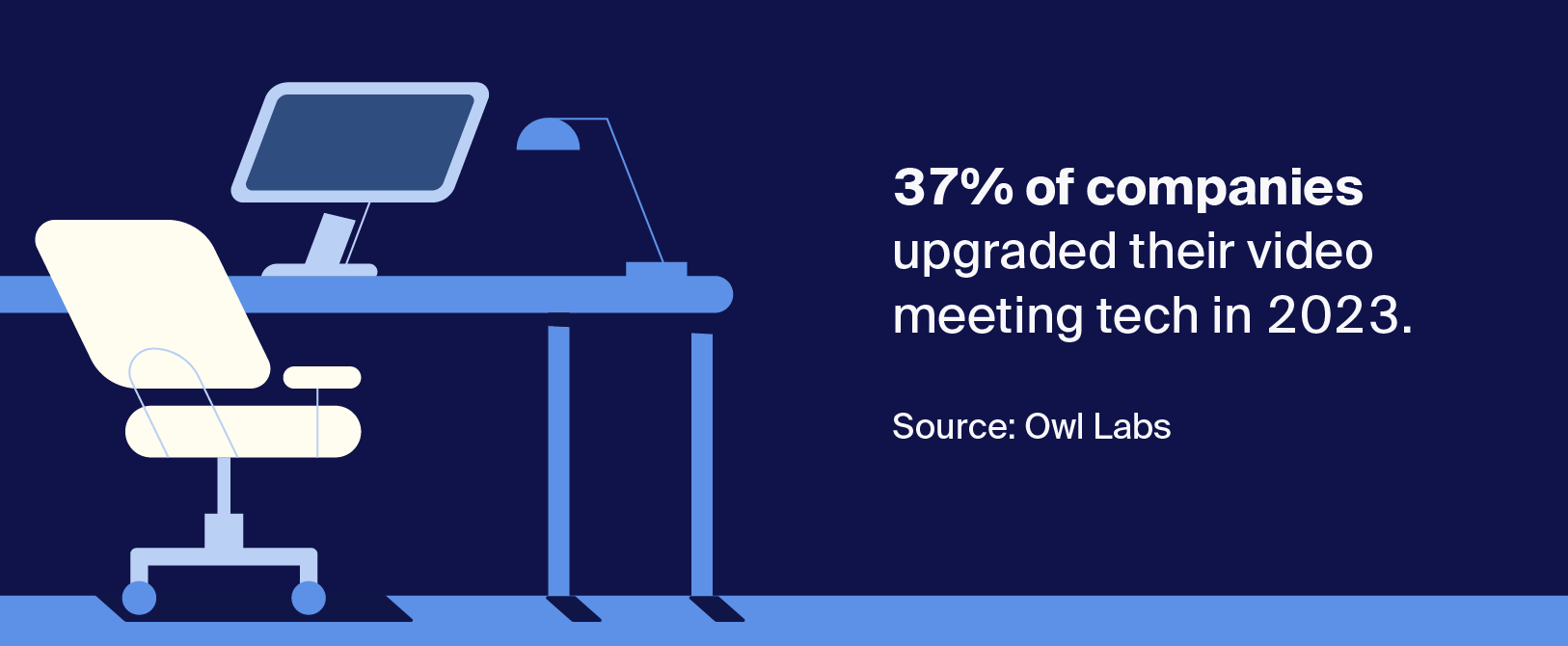
Many professionals today favor jobs that offer remote or hybrid schedules. Catering to the workforce’s preferences goes a long way in recruitment, business appeal, and overall employee satisfaction.
This shift in mindset reflects a broader transformation in workplace culture. Flexibility is no longer seen as a perk, but an expectation. Employees are seeking out roles that support a healthy work-life balance, and companies that ignore these signs could risk higher turnover and reduced engagement.
Here are some of the latest work-from-home statistics on employee preferences to help you stay aligned with employee satisfaction:
19. 50% of business leaders report a substantial increase in workplace flexibility over the past two years and 45% report a slight increase. (Zoom)
20. 25% of workers would take a pay cut of 15% to have flexible working hours or a four-day work week. (Owl Labs)
21. A hybrid worker could save up to $6,000 a year by not paying for things like gas, lunch, and professional clothes. (Global Workplace Analytics)
22. 94% of professionals say they'd like to continue working remotely at least some of the time for the rest of their careers. (Buffer)
23. Remote work increased happiness by as much as 20%. (Tracking Happiness)
24. 41% of surveyed in-office workers experience burnout symptoms, as compared to 26% of their remote counterparts. (IE University)
25. Among the 42% of professionals who are planning to start or have already started hunting for a new job in 2024, 31% are doing so in pursuit of a job with more flexibility. (Robert Half)
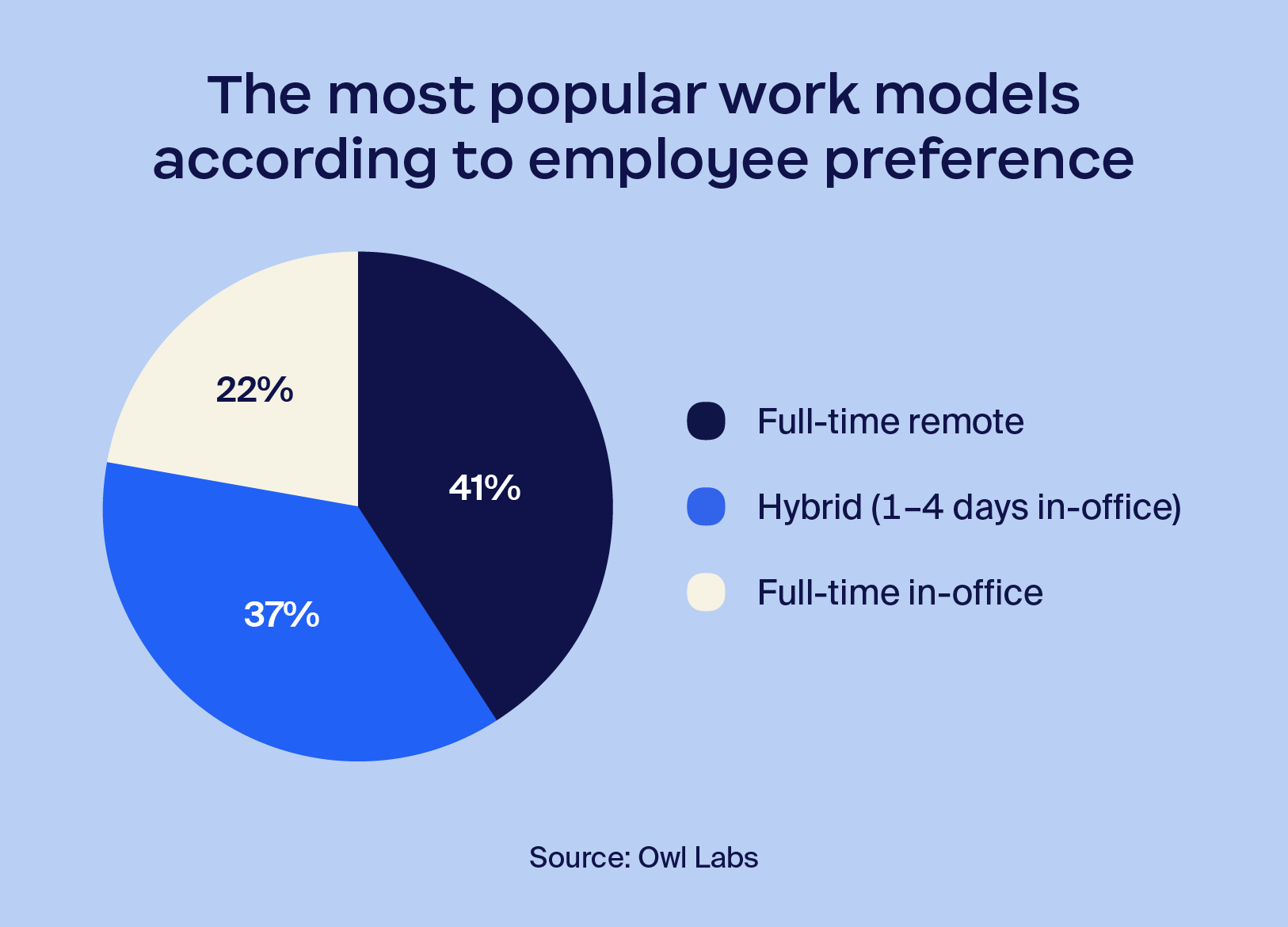
Modern flexible schedules aren't without their challenges. It's not easy building a virtual structure that replaces everything the office can be. First of all, your team will need some training on how to best communicate and collaborate. You'll also need to find software solutions that enable your teams to work together just as efficiently.
In recent years, working from home has become a cornerstone of modern business, with companies finding their own pace, processes, and communication channels.
The right collaboration platforms and tools can help you overcome the challenge of making existing processes remote-compatible and enabling efficient communication across the board. Platforms like Zoom Workplace can help you build the foundation of your collaboration ecosystem with a versatile solution designed to enable effective communication and collaboration.
Learn how Zoom Workplace’s collaboration features can enable your team to accomplish current and future goals today.